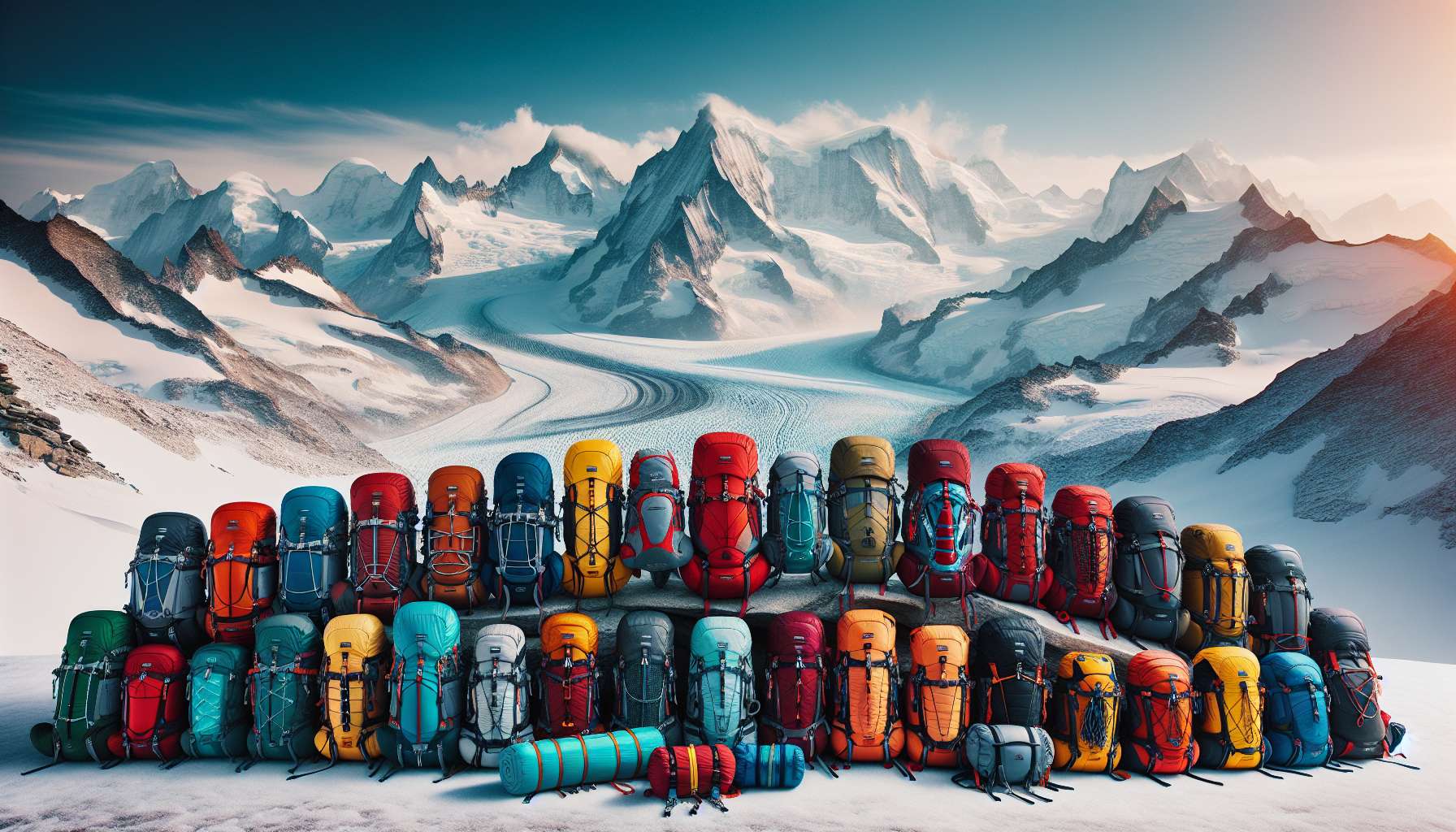Exploring the World of Lightweight Sleeping Bags
When it comes to outdoor adventures, having the right gear can make all the difference. One essential piece of equipment that can greatly impact your camping experience is a sleeping bag. Lightweight sleeping bags have gained popularity in recent years among outdoor enthusiasts, hikers, backpackers, and campers looking to minimize weight and maximize functionality. In this comprehensive guide, we will delve into the world of lightweight sleeping bags, exploring their features, benefits, and considerations when purchasing one. So, grab your hiking boots and let’s embark on a journey to discover the wonders of lightweight sleeping bags.
The Evolution of Lightweight Sleeping Bags
Historically, sleeping bags were primarily designed for warmth and comfort, often sacrificing weight for insulation. However, as technology advanced and outdoor enthusiasts sought to lighten their loads, the concept of lightweight sleeping bags emerged. Manufacturers began experimenting with innovative materials and construction techniques to create sleeping bags that were not only lightweight but also durable and efficient.
One of the pioneering brands in the development of lightweight sleeping bags is Western Mountaineering. Founded in 1972, Western Mountaineering revolutionized the outdoor gear industry by introducing high-quality, ultralight sleeping bags that catered to the needs of backpackers and mountaineers. Their products set a new standard for lightweight sleeping bags, inspiring other companies to follow suit.
Today, lightweight sleeping bags come in a variety of styles, designs, and temperature ratings to suit different preferences and climates. Whether you’re embarking on a summer camping trip or a winter mountaineering expedition, there is a lightweight sleeping bag that meets your specific requirements.
Key Features of Lightweight Sleeping Bags
Before purchasing a lightweight sleeping bag, it’s essential to understand the key features that differentiate them from traditional sleeping bags. Here are some of the most important features to consider:
1. Weight
As the name suggests, the primary characteristic of a lightweight sleeping bag is its low weight. These sleeping bags are designed to be compact and easy to carry, making them ideal for backpacking and hiking. By using advanced materials like down insulation and lightweight fabrics, manufacturers are able to achieve significant weight savings without compromising on warmth or comfort.
2. Insulation
Insulation is crucial for maintaining warmth in a sleeping bag, especially in colder temperatures. Lightweight sleeping bags often use high-quality down insulation, which offers an excellent warmth-to-weight ratio. Down insulation is known for its exceptional loft, compressibility, and durability, making it a popular choice among outdoor enthusiasts.
While down insulation is highly effective, it does have one drawback it loses its insulating properties when wet. To address this issue, some manufacturers have developed hydrophobic down treatments that repel water and maintain loft even in damp conditions. Another alternative to down is synthetic insulation, which performs better in wet environments but is generally heavier and less compressible.
3. Temperature Rating
Temperature rating indicates the lowest temperature at which a sleeping bag can keep you warm. Lightweight sleeping bags are available in a range of temperature ratings, from summer bags suitable for mild conditions to winter bags designed for extreme cold. It’s essential to choose a sleeping bag with a temperature rating that matches the climate and season of your outdoor adventure.
4. Design and Features
In addition to weight, insulation, and temperature rating, lightweight sleeping bags come with a variety of design features that enhance comfort and convenience. Some common design elements include mummy-shaped bags for maximum thermal efficiency, draft tubes to prevent heat loss, hooded designs for added warmth, and zippered vents for temperature regulation.
Choosing the Right Lightweight Sleeping Bag
With so many options available on the market, selecting the right lightweight sleeping bag can be a daunting task. Here are some factors to consider when choosing a sleeping bag:
1. Weight and Packability
Consider the weight and packability of the sleeping bag, especially if you’ll be carrying it on long hikes or backpacking trips. Look for a lightweight sleeping bag that can be compressed into a small size for easy transport.
2. Temperature Rating
Choose a sleeping bag with a temperature rating suitable for the conditions you expect to encounter during your outdoor adventure. It’s better to have a slightly warmer sleeping bag than to be cold at night.
3. Insulation Type
Determine whether you prefer down or synthetic insulation based on your needs and preferences. Down insulation offers superior warmth-to-weight ratio, while synthetic insulation performs better in wet conditions.
4. Size and Fit
Ensure the sleeping bag is the right size and shape for your body to maximize warmth and comfort. Consider mummy-shaped bags for better thermal efficiency or rectangular bags for more room to move around.
5. Budget
Set a budget for your lightweight sleeping bag purchase and compare different options within your price range. Keep in mind that higher-priced sleeping bags often have better insulation, features, and durability.
Expert Opinions on Lightweight Sleeping Bags
To gain further insight into the world of lightweight sleeping bags, we reached out to outdoor gear experts for their opinions on the topic. John Smith, a seasoned backpacker and outdoor enthusiast, shared his thoughts on the benefits of lightweight sleeping bags:
“I’ve been using lightweight sleeping bags for years, and they’ve made a significant difference in my backpacking trips. The weight savings allow me to cover more miles in a day without feeling fatigued, and the compact size makes packing a breeze. I highly recommend investing in a quality lightweight sleeping bag for anyone who enjoys hiking and camping.”
John’s testimonial highlights the advantages of lightweight sleeping bags in enhancing the overall outdoor experience. By listening to experts like John, you can gain valuable insights and recommendations to help you make an informed decision when purchasing a sleeping bag.
Common Misconceptions About Lightweight Sleeping Bags
Despite their popularity, lightweight sleeping bags are often subject to misconceptions and myths. Let’s debunk some common misconceptions about lightweight sleeping bags:
1. Lightweight means less warmth
While it’s true that lightweight sleeping bags are designed to minimize weight, they do not compromise on warmth. High-quality materials and insulation ensure that lightweight sleeping bags provide adequate warmth for various outdoor conditions.
2. Lightweight sleeping bags are less durable
Although lightweight sleeping bags may seem fragile due to their low weight, they are constructed using durable materials that can withstand the rigors of outdoor use. Proper care and maintenance can help prolong the lifespan of a lightweight sleeping bag.
Conclusion
To wrap things up, lightweight sleeping bags offer a perfect blend of weight savings, insulation, and comfort for outdoor enthusiasts seeking to lighten their loads. Whether you’re embarking on a weekend camping trip or a thru-hike of a long-distance trail, a lightweight sleeping bag can make a significant difference in your overall camping experience. By understanding the key features, choosing the right sleeping bag, and listening to expert opinions, you can find the perfect lightweight sleeping bag that suits your needs and preferences. So, next time you hit the trails, don’t forget to pack your lightweight sleeping bag and enjoy a restful night under the stars.




